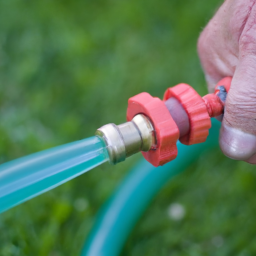How To Syphon Gas With A Garden Hose
Table of Contents []
How To Syphon Gas With A Garden Hose
Introduction
One of the most useful tools when it comes to handling liquid fuel is a garden hose. This highly versatile item can be used for a variety of DIY projects, such as syphoning gas with a garden hose. In this article, we will explore the basics of how to syphon gas with a garden hose, including how to syphon gas safely, the different types of hoses, and other tips and tricks for getting the job done.
Types of Hoses
The type of hose you choose to use for syphoning gas will have a big impact on the success of the task. There are a few different types of garden hoses to choose from, each with their own advantages and disadvantages.
Flexible Hoses: Flexible hoses are lightweight and easy to maneuver, making them ideal for transporting liquid fuel, but they may not be as durable as other types of hoses and can easily kink or become damaged.
Reinforced Hoses: Reinforced hoses are more durable than flexible hoses, but they are also heavier and more rigid, which can make them difficult to use in certain scenarios.
Metal Hoses: Metal hoses have the advantage of being both lightweight and durable. However, they can be difficult to maneuver in tight spaces, and may not be suitable for all types of liquid fuel.
Syphoning Gas Safely
Syphoning gas is an inherently dangerous task, as liquid fuel is highly flammable and can easily cause serious injury or even death if handled improperly. The following safety tips should be followed when syphoning gas with a garden hose:
-Wear protective gear, such as gloves, safety glasses, and a long sleeved shirt.
-Always use a clean, dry hose for syphoning gas. Make sure the hose is not kinked or damaged in any way.
-Do not smoke or introduce any open flames when syphoning gas with a garden hose.
-Keep a fire extinguisher close at hand in case of an emergency.
-Do not syphon from an enclosed space.
How to Syphon Gas With a Garden Hose
Syphoning gas with a garden hose is a relatively simple process that can be done in just a few basic steps. First, make sure the area is well ventilated and free of any open flame or sparks. Next, attach one end of the hose to the tank of gas and ensure a tight seal. Now, slowly suck on the other end of the hose until you feel the suction of the gas, then remove the hose from your mouth and place the other end into a large container to collect the fuel. Once you can no longer feel the suction of the gas, the syphon is complete.
Tips and Tricks
There are some tips and tricks you can use to make syphoning gas with a garden hose more efficient and successful. For example, you can use several short pieces of hose instead of one long one, as this will reduce the likelihood of the hose kinking or becoming damaged. You can also use a plastic siphon pump, which is a small device that can be used to move liquid fuel from one container to another without the need for suction. Another effective tip is to submerge the hose in the tank of gas before sucking on it, as this will help create a better seal and a stronger suction.
Conclusion
Syphoning gas with a garden hose is a useful tool for many DIY projects, but it must be done safely and with the proper precautions in order to avoid serious injury or death. This article has explored some of the basics of syphoning gas with a garden hose, including the different types of hoses to choose from, how to syphon gas safely, and tips and tricks for making the task more efficient and successful.

Previous Page
